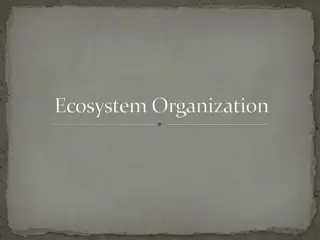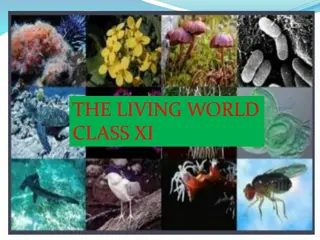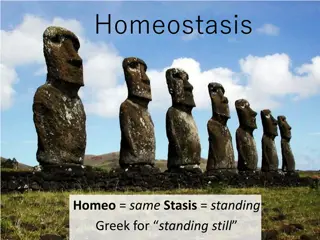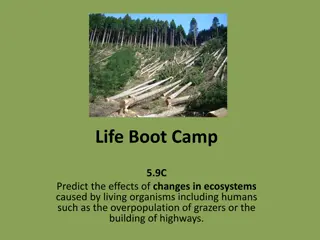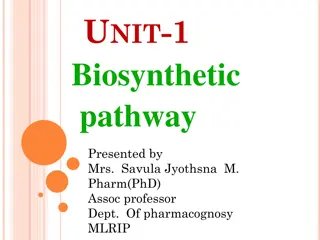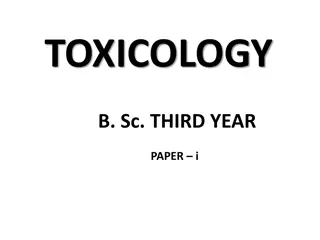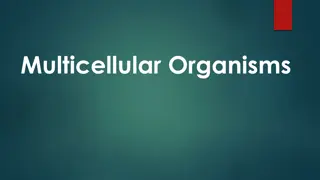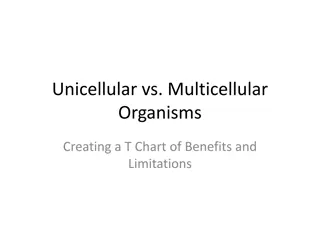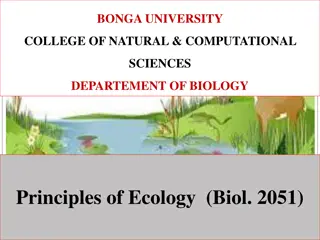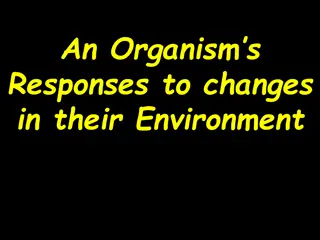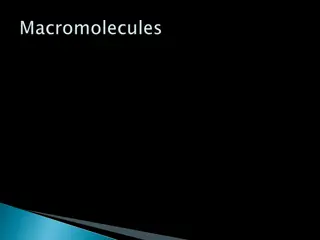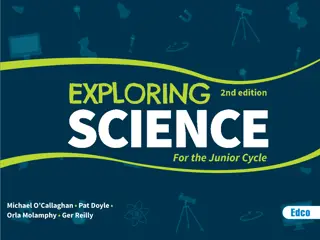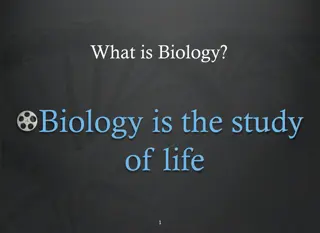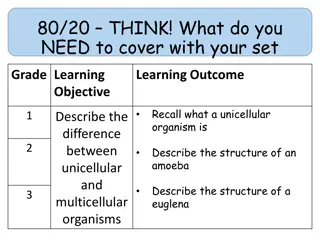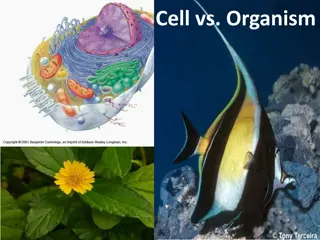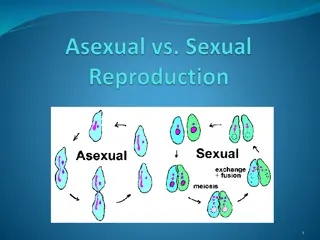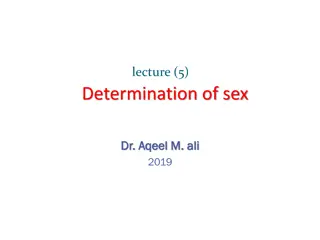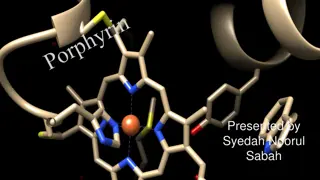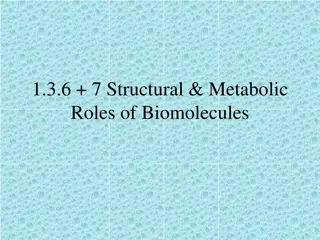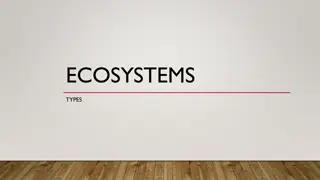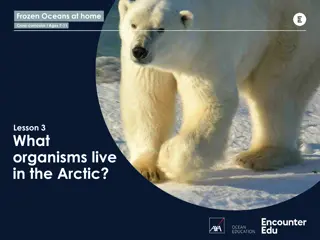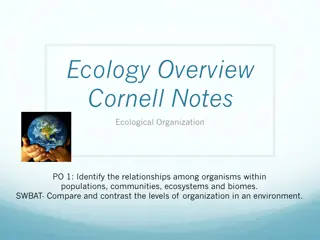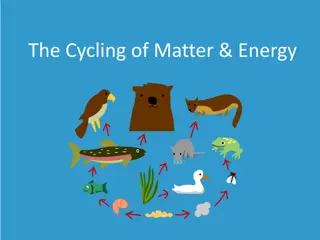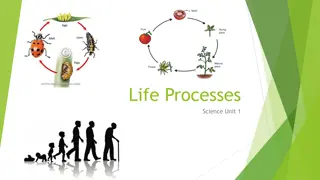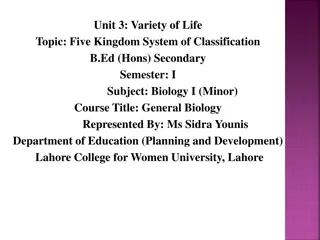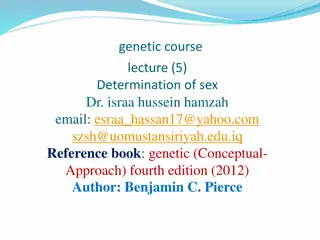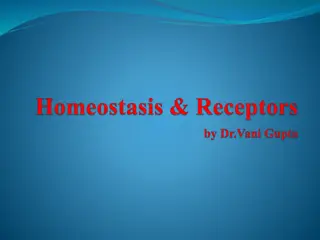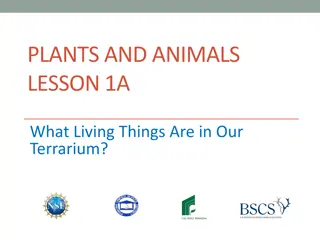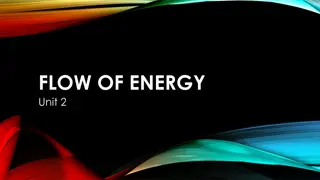Understanding Levels of Organization in Living Organisms
Explore the levels of organization in living organisms, from atoms to cells, and the differences between unicellular and multicellular organisms. Learn about prokaryotes, eukaryotes, cell differentiation, chromosomes, and the importance of stem cells in development and repair.
Download Presentation

Please find below an Image/Link to download the presentation.
The content on the website is provided AS IS for your information and personal use only. It may not be sold, licensed, or shared on other websites without obtaining consent from the author. Download presentation by click this link. If you encounter any issues during the download, it is possible that the publisher has removed the file from their server.
E N D
Presentation Transcript
Levels of Organization Read through the PowerPoint and answer the questions at the end.
Levels of Organization All matter is made of atoms. Atoms combine and form molecules. Molecules make up cells. Human cells
Unicellular Organisms Remember that .. Unicellular organisms have only one cell. All the things needed for their survival takes place within that one cell. Unicellular organisms include both prokaryotes and eukaryotes.
Prokaryotes Remember A unicellular organism made of one prokaryotic cell is called a prokaryote. Prokaryotes are cells without a membrane bound nucleus. Prokaryotes are smaller than eukaryotic cells.
Eukaryotes Remember . A unicellular organism that is made of one eukaryotic cell is called a eukaryote. A eukaryotic cell has a nucleus surrounded by a membrane. A eukaryotic cell has may specialized organelles.
Multicellular Organisms Cell differentiation-is the process by which cells become different types of cells. All cells in a multicellular organism come from one cell, a fertilized egg. Cell division stars quickly after fertilization. The first cells made can become any type of cell.
Cells A cell s instructions are contained in its chromosomes. Chromosomes-are bundles of tightly coiled DNA located within the nucleus of almost every cell in your body. DNA(deoxyribonucleic acid)-is an essential molecule for life that acts like a recipe holding the instructions that tell our bodies how to develop and function. Different cell types use different parts of the instructions on the chromosomes. Biology for Kids: DNA and Genes
Stem Cells Not all cells in a developing animal differentiate or become a specialized cell. Stem cells-are unspecified cells that are able to develop into many different cell types and are found in both plants and animals. Large numbers of stem cells can be found in embryos, while adults have fewer stem cells. Adult stem cells are important for cell repair and replacement.
Types of Differentiate Cells Red Blood Cells Nerve Cell
Tissues Tissues-are groups of similar types of cells that work together to carry our specific tasks. Most animals, including humans, have four main types of tissues. Plants have three main types of tissues.
Four Main Types of Human Tissue Connective Tissue-provides structure and support Nervous Tissue-carries messages to and from the brain Epithelial Tissue-forms the protective outer layer of skin and the lining of major organs and internal body cavities Muscle Tissue-makes movement possible
Three Main Types of Plant Tissue Dermal tissue-provides protection and helps reduce water. Vascular tissue-transports water and nutrients from one part of a plant to another. Ground tissue-provides storage and support.
Organs Complex jobs in organisms require more than one type of tissue. Organs-are the groups of different tissues working together to perform a particular job and are found in both plant and animals. Example: The stomach is an organ that breaks down food and is made of all 4 types of tissue performing a specific function necessary for the stomach to work properly. Example: A leaf is and an example of an organ that is specialized for photosynthesis.
Organ System Organ systems-are groups of organs that work together to complete a series of tasks. Example: Thedigestive system is made up of the stomach, the small intestines, the liver, and the large intestine. These organs all work together to break down food.
Organisms Multicellular organisms usually have many organ systems The human body has many organ systems. Each organ system depends on the others and cannot work alone. Example: The respiratory system and the circulatory system carry oxygen to the cells of the muscle tissue in the stomach which aids in the survival of muscle tissue cells.
Directions: Answer the following questions on a piece of notebook paper and keep in a notebook or folder until we return to school. Answers will be posted on your teacher s website. 1. How do unicellular and multicellular organism differ? 2. What is the process by which cells become different types of cells? 3. Where are the instructions for a cell found? 4. What is DNA? 4. Name two types of cells that can result from cell differentiation. 5. What are tissues? 6. What are the four main types of human tissue? 7. What is an organ? 8. Name three organs NOT mentioned in the PowerPoint? 9. What is an organ system? 10. Can organ systems work independently? 11. How does the respiratory system and the circulatory system work together? 12. Complete the chart. ________ tissue ________ organism ________



